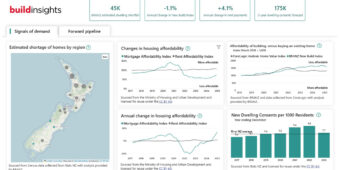Workplace bullying – part 3
25 Mar 2024, Learn, Legal, Prove Your Know How

Health and safety and employment go hand in hand. Part 2 of this series of articles looked at when WorkSafe New Zealand should intervene when an allegation of workplace bullying is raised. This final part explores the intersection between employment law and regulatory defence when health and safety concerns — or even WorkSafe intervention — arise out of a bullying allegation
Where the issue is limited to an employee raising a complaint internally, the employer is obliged to address the issue and take appropriate action (which we have set out in more detail below).
In our view, where there is a joint process of an employment complaint and a WorkSafe investigation, the method in which the employer addresses the complaint would likely not change. Nonetheless, the intersection between employment law and the regulatory framework can be challenging. A particular tension arises in the context of s168 of the HSWA, primarily in relation to WorkSafe exercising its powers to require a PCBU to produce information1 and to present at a duty holder interview.2
The reality is that the information required, and questions put to the employer, will often extend beyond addressing the complaint made by the complainant.
An exploration of wider practices, policies and history of similar issues within the business will typically occur. In these circumstances, the employer may lose a significant amount of control over information, and this can give rise to risk in both the employment and regulatory contexts, whereas in employment only processes, that control largely sits with the employer.
Addressing a complaint
The nature of the complaint will often inform the level of formality required in the employer’s response to it.
On one end, a complaint that involves relatively low-level alleged conduct (such as one-off instances of swearing or raised voices) may warrant a discussion, meeting, facilitation or other informal resolution.
On the other end, a more serious or complex complaint (harassment or continued bullying) or involving multiple complainants or respondents will usually warrant a formal investigation, carried
out internally or externally.
An entire article could be written on the various steps necessary for a full and fair formal investigation, but in summary an employer ought to:
- Clearly frame the allegations and terms of investigation from the outset.
- Engage with the complainant and respondent regarding the approach to the investigation, proposed witnesses and proposed investigator.
- Obtain consent from the complainant to provide details of the complaint to the respondent and other parties (otherwise risking a claim under the Privacy Act 2020).
- Ensure the complainant and respondent are advised of their right to support and representation.
- Ensure any external investigator is either a registered lawyer or is licensed in accordance with the Private Security Personnel and Private Investigators Act 2010. Investigate the complaint with a focus on impartiality and evidential scrutiny.
- Obtain feedback from the complainant and respondent on any resulting investigation report prior to it being finalised. Where a WorkSafe investigation is ongoing or reasonably anticipated, employers should treat all statements, correspondence and investigation reports as discoverable by WorkSafe.
Managing concurrent personal grievance and a worksafe investigation
Seldom does an employer manage a complaint of bullying (whether informally or formally) without a personal grievance being raised by either the complainant or respondent.
Furthermore, situations can and do arise where a complainant is dissatisfied with their employer’s response to their complaint and so turns to WorkSafe as a means of escalating it.
Therefore, having heard from WorkSafe about its approach to psychosocial hazards in the section above, it is essential to consider the possibility of a personal grievance being lodged in the employment jurisdiction concurrently with an ongoing WorkSafe investigation.
In respect of relevant timeframes:
- WorkSafe will have one year from the date of receipt of the complaint to determine whether it will prosecute.3
- The employee has 90 days, from the date the issue arose, to raise a personal grievance and three years from the date of raising the personal grievance to file a statement of problem in the Employment Relations Authority (Authority).4
- Typically, cases will be set down in the Authority within one year of filing of a statement of problem.
Where concurrent processes do occur, the difficulty rests in the magnitude of “worst case scenarios” in each process. Employment claims may garner awards of $20,000 to $30,000 as compensation, three months’ lost wages (where a resignation or dismissal has occurred) and modest tariff costs.
In contrast, prosecutions under the HSWA can — depending on the charges filed — attract conviction, potentially have a maximum fine of $500,000,5 $1,500,0006 or $3,000,0007, lay charges against officers,8 make orders for reparation (this will vary depending on the degree of harm suffered) and incur prosecutor costs. If there were Authority proceedings on foot concurrent with a WorkSafe investigation, it would likely be appropriate to seek adjournment of the Authority’s proceedings until the WorkSafe process had concluded.
The realistic risk of prosecution
No prosecutions have been brought in respect of issues relating to bullying, harassment and intimidation in New Zealand by WorkSafe. Indeed, WorkSafe has taken a more holistic approach in addressing concerns raised regarding mentally healthy work, as described in the section above.
Notwithstanding this, our own experience tells us that WorkSafe has investigated allegations of bullying by an individual and reached a duty holder interview stage. At the same time, a personal grievance claim was timetabled for a hearing in the Authority.
Again, based on our own experience, we know that in matters where WorkSafe has proceeded with an investigation, its examination has been thorough and wide-reaching, covering years of records requiring substantial allocation of client resources to attend to requirements to produce information.
For example, an employer or PCBU will be required to produce years’ worth of any bullying complaints received, in addition to evidence/documentation of how the PCBU triaged and addressed those complaints.
While the type of information requested is not at odds with an employer’s relevant obligations in employment law, the concern relates to how extensive and far-reaching these requests can be.
An employment process is focused on particular individuals. In contrast, WorkSafe is looking for a PCBU to demonstrate it has robust and effective bullying policies and procedures in place, that workers are aware of how to raise complaints appropriately, and that the PCBU can demonstrate it follows its own policies.
WorkSafe can, and has, taken enforcement action short of prosecution in these investigations, such as the issuing of improvement notices under s101 of the HSWA. While a prosecution based on psychosocial risk or harm has not yet eventualised in New Zealand, it is certainly feasible.
In South Australia, which operates under a similar legislative framework,9 a prosecution has successfully been brought regarding the bullying of a young apprentice.10 The particular conduct in that case was egregious, namely by squirting and lighting flammable liquid onto the victim’s clothing. There is no reason why WorkSafe would not bring a prosecution for similar conduct.
Conclusion
We consider a New Zealand prosecution for psychosocial risk or harm related to bullying is a matter of when, not if. As with any litigation risk, the best way to mitigate liability is early intervention and prevention.
Balancing a PCBU/employer’s obligations, and applied specifically to this issue, employers should consider:
- Developing tailored policies that denounce bullying, intimidation, harassment and other offensive behaviour, as well as prescribing procedure for complaints to be raised and dealt with.
- Training employees and management on working in a manner consistent with such policies, including refresher training throughout employment.
- Establishing lines of communication for employees to report any related issues. Ensuring that each complaint received is considered and addressed with appropriate weight.
- Ensuring the triaging of complaints is compliant with employment law principles.
- Where a complaint is upheld against an employee, ensuring that appropriate corrective or disciplinary action occurs.
1. Health and Safety at Work Act 2015, s 168(1)(e).
2. Health and Safety at Work Act, s 168(1)(f).
3. Health and Safety at Work Act, s 146.
4. Employment Relations Act 2000, s 114.
5. Health and Safety at Work Act, s 49 for offences that concern only a breach of a person conducting a business or undertaking’s (PCBU) duty under the Health and Safety at Work Act.
6. Health and Safety at Work Act, s 48 for offences that concern a breach of duty and, as a result of that breach, exposure of an individual to a risk of death, serious injury or serious illness.
7. Health and Safety at Work Act, s 47 for offences concerning a breach of duty and recklessness as to the risk to an individual of death, serious injury or serious illness.
8. Health and Safety at Work Act, s 50 for which corresponding charges can be filed under ss 47–49.
9. Work Health and Safety Act 2012 (SA).
10. Campbell v Tad-Mar Electrical Pty Ltd [2019] SAET 225 report-final.pdf .
This article, written by Duncan Cotterill and Worksafe New Zealand, it was originally published in the first issue of the Lexis Nexis Employment Law Bulletin. If you have any questions about this article, please contact us through our website duncancotterill.com
Duncan Cotterill is a full-service law firm with offices in Auckland, Wellington, Nelson, Queenstown and Christchurch.
Disclaimer: the content of this article is general in nature and not intended as a substitute for specific professional advice on any matter and should not be relied upon for that purpose.
Register to earn LBP Points Sign in
3 Comments
Leave a Reply
You must be logged in to post a comment.




awesome
no one likes a bully
Good one